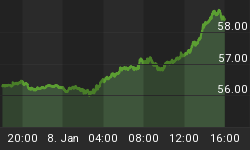Is the market's recent strength, especially in commodities, telling us Friday's employment report will be bullish (better than expected)? Recent data on employment this week support the possibility of a bullish number on Friday morning. Even if the employment numbers beat expectations, the good news may have already been baked into the cake. As we prepare, it is always important to understand both the bullish and bearish case. The next step is to have game plans for both outcomes. Positive signals are coming from markets around the globe and from numerous asset classes. We all know the bearish case - we are overdue for a correction, financial crisis, etc. The bullish case is based on improving fundamentals and improving technicals. Chart gaps are part of a potentially bullish technical picture. Gaps exist above several markets - gaps that could be filled before or after a correction.

If we do any buying near current levels, we will focus on markets with gaps in the charts. We will also force the market to move into the gap. If we never move into the gap, then we will remain patient and hopefully be able to buy during a correction. All things being equal, it would be much easier if we get the ever awaited correction. Risk control remains very important.
Markets sometimes (not always) move in symmetrical patterns. If the S&P 500 is forming a head-and-shoulders bottom, the right shoulder should not exceed the left shoulder (Jan 2009 high of 943). If the symmetry holds, a correction would begin soon - maybe moving back near 800. A bullish break of 943 would put us one step closer to a major gap. Just as gaps are created quickly on the way down, they can be filled quickly on the way back up. Many markets have already filled chart gaps, so it is possible the S&P 500 will do the same. We have a strategy to manage risk in either outcome (symmetry or gap) - we do not need to guess. One risk is to sustain losses during a correction if you buy near current levels - another risk is being left behind if the gaps are filled. Any buying near current levels must be in small percentage quantities relative to the portfolio's total value. Small position sizes can help us control risk in the event we buy and immediately are hit with a big correction.

















